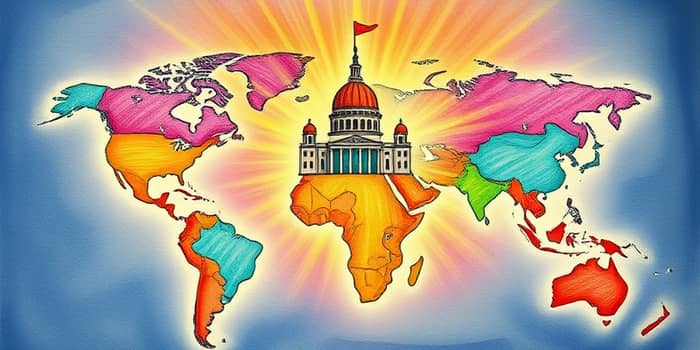
Since the onset of the COVID-19 pandemic, governments globally have marshaled extraordinary resources to sustain their economies. In 2020 and beyond, fiscal stimulus became a linchpin of recovery efforts.
This in-depth analysis explores how unprecedented scale and ambition in government spending reshaped global GDP growth trajectories.
In the years leading up to 2020, world GDP growth averaged around 3.5%, reflecting stable expansion driven by trade and investment. The pandemic slump of –2.9% in 2020 was the deepest contraction since World War II, shocking markets and households.
Projections for 2024–26 range between 2.8% and 3.3%, with the World Bank’s 2025 forecast cut to a mere 2.3% due to ongoing geopolitical tensions and trade barriers. In this challenging environment, governments turned to bold fiscal actions.
These measures formed the largest fiscal rescue efforts ever, cushioning demand and preserving economic stability.
Advanced economies led the charge, deploying historic stimulus packages as a share of GDP. The table below highlights key national strategies and outcomes.
Emerging markets, constrained by limited fiscal space, leaned more on monetary policy yet still achieved notable rebounds by combining targeted transfers with business relief.
Fiscal stimulus operates as safeguarding millions of livelihoods when private sector demand collapses. By providing cash and credit, governments stoked consumer spending and prevented mass layoffs.
The fiscal multiplier effects were pronounced for direct transfers and wage subsidies, translating each dollar of spending into up to $1.50 of GDP in many advanced economies. This fueling a robust demand rebound proved vital during lockdowns and supply chain disruptions.
Internationally, large stimulus in the U.S., EU, and China bolstered global trade volumes, benefiting exporters in developing nations. The ripple effect helped sustain manufacturing and commodity prices, softening the global downturn.
As inflation moderates, many central banks plan to lower interest rates, amplifying the impact of ongoing fiscal measures. However, the growth outlook remains uncertain, with the IMF projecting 3.3% global GDP growth in 2025 versus the World Bank’s more cautious 2.3%.
Key concerns include debt sustainability and the potential crowding out of private investment. Germany’s post-reunification-level deficits signal a shift toward heavy infrastructure and defense spending, while the U.S. debates further targeted relief amid political gridlock.
Policymakers face a delicate balancing act: maintaining expansionary support without jeopardizing long-term fiscal health. This tension raises questions about the optimal mix of short-term transfers versus permanent investments in green energy and digital infrastructure.
The pandemic era offers several enduring lessons for future crises:
By applying these insights, governments can better navigate emerging challenges, from climate shocks to technological disruptions.
Ultimately, the story of post-2020 fiscal stimulus is one of resilience and innovation. While debt burdens have risen, the decisive actions taken by policymakers worldwide underscore the transformative power of public investment. With prudent planning and strategic focus, fiscal policy will remain a cornerstone of sustainable economic growth in the years ahead.
References













